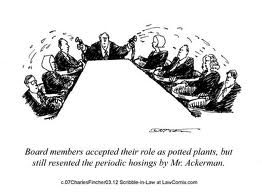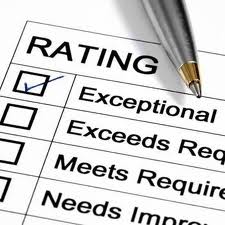 Let’s face facts . . . your non-profit board has gaps in it. How do you know that? You know it because you and your board members sat down with one of any number of different board composition gap assessment tools (available in the public domain) and you did the math. You looked at demographics, experiences, skill sets, interests, fundraising, and social networks, and everyone at that board development committee meeting was able to see gaps.
Let’s face facts . . . your non-profit board has gaps in it. How do you know that? You know it because you and your board members sat down with one of any number of different board composition gap assessment tools (available in the public domain) and you did the math. You looked at demographics, experiences, skill sets, interests, fundraising, and social networks, and everyone at that board development committee meeting was able to see gaps.
Guess what? This happens every time and it happens in every organization. There is no such thing as the perfect board.
Hopefully, your board development committee is doing a gap assessment every year before it goes out to recruit board members. While your gaps may not regularly change, the reality is that your circumstances and the external world around you is in a constant state of change, which affects how you look at your gaps and approach your prospecting and recruitment efforts.
 For example, you might have built a very strong “governance board” with gaps around fundraising acumen. In most years, this might not have been an issue because you had very strong grant funding from key foundations. Unfortunately, let’s hypothetically say that Wall Street decides that a major market correction was necessary and the stock market takes a historic tumble. Where do many foundations secure the money they give away every year? Yep, they distribute their investment income. With your foundation income streams in a state of flux, your fundraising gaps on the board have become a major liability. Perhaps, this year’s board recruitment efforts should focus on identifying prospects who possess private sector fundraising acumen and experience and come from a diversity of different social networks.
For example, you might have built a very strong “governance board” with gaps around fundraising acumen. In most years, this might not have been an issue because you had very strong grant funding from key foundations. Unfortunately, let’s hypothetically say that Wall Street decides that a major market correction was necessary and the stock market takes a historic tumble. Where do many foundations secure the money they give away every year? Yep, they distribute their investment income. With your foundation income streams in a state of flux, your fundraising gaps on the board have become a major liability. Perhaps, this year’s board recruitment efforts should focus on identifying prospects who possess private sector fundraising acumen and experience and come from a diversity of different social networks.
It is at this point where I have personally sat in board development committee meetings and the conversation always seems to bog down. The brainstorming and prospecting dialog oftentimes lead to someone saying, “There isn’t anyone in our community who I know that fits that description.” Even better, I’ve heard people say, “That person doesn’t exist in our community.”
 I suspect that these reactions are a result of:
I suspect that these reactions are a result of:
- The committee giving up after mentally examining all of the “usual suspects”.
- The composition of the committee being such that there isn’t very much diversity from a social network perspective sitting around the table.
- Being unsure of how to determine what skills and experiences people bring to the table.
Regardless, you need find ways to push past this obstacle and stimulate a dynamic brainstorming exercise around prospect identification.
I’ve seen some non-profit professionals bring lists of people to that meeting such as: Chamber of Commerce membership lists and Rotary Club (or Kiwanis, Lions, Jaycees, etc) rosters. In my opinion, this can definitely help people start thinking; however, I’m always left with this one question:
What about your donor database?
Many of us have these amazing database programs with thousands of names. These are people who must have liked us at least at some point in time. In fact, they liked us well enough to write a check. For some of those people, they love our mission so much that they support us regularly.
 If you are an “excelling organization,” then you have more than just names and dollars in that donor database. You’ve been collecting data pertaining to birthdays (aka age), occupation (aka skill sets and acumen), interests and experiences, and service club participation (aka social networks). If you aren’t this good and haven’t been collecting and recording this type of information, my suggestion is that you figure out a way to start doing so immediately.
If you are an “excelling organization,” then you have more than just names and dollars in that donor database. You’ve been collecting data pertaining to birthdays (aka age), occupation (aka skill sets and acumen), interests and experiences, and service club participation (aka social networks). If you aren’t this good and haven’t been collecting and recording this type of information, my suggestion is that you figure out a way to start doing so immediately.
Your donor database is an amazing tool on so many different front, and it isn’t just something you use for fundraising. It can and should be the best board development tool that your board development volunteers turn to every year when they start prospecting and brainstorming.
So, the next time someone on your board development committee suggests that your community has “run out of” board prospects, I encourage you to say poppycock and pivot quickly to your donor database for an endless supply of names to consider.
Does your organization use its donor database as part of its board development prospecting process? If so, what have been your experiences? Which board composition gap assessment tool do you use? Where did you find it, and can you point others in that direction? What is the biggest gap that you’re seeing on non-profit boards in your community (e.g. too many Baby Boomers and not enough young prospects or not enough people with fundraising skills, etc)?
Please scroll down and take 60 seconds out of your busy day to share an answer to one of these questions. Why? Because we can all learn from each other and something you share today might actually make a HUGE impact in someone else’s agency. It is time to “pay it forward”. Please?
Here’s to your health!
Erik Anderson
Founder & President, The Healthy Non-Profit LLC
www.thehealthynonprofit.com
erik@thehealthynonprofit.com
http://twitter.com/#!/eanderson847
http://www.facebook.com/eanderson847
http://www.linkedin.com/in/erikanderson847
























